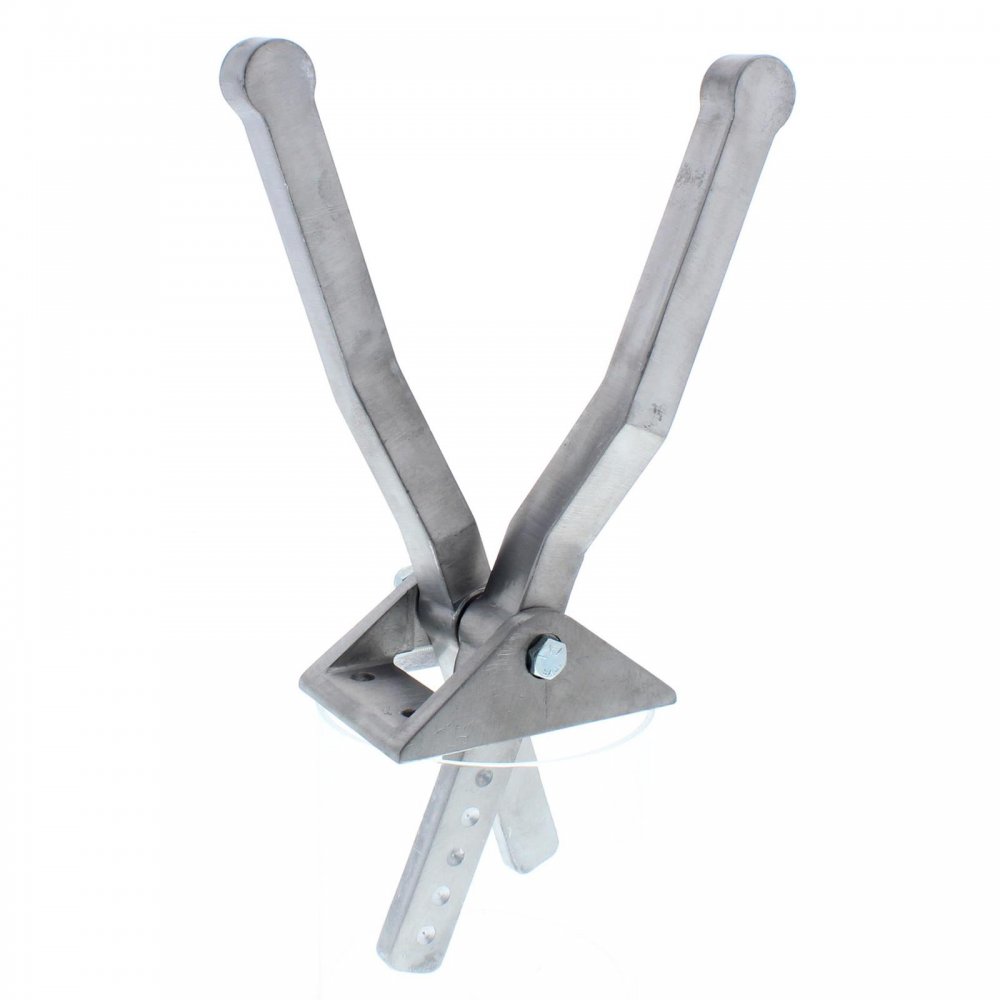Original Poster: 85_Ranger4x4
Difficulty: 3 out of 10
Disclaimer: The Ranger Station.com, The Ranger Station.com Staff, nor the original poster are responsible for you doing this modification to your vehicle. By doing this modification and following this how-to you, the installer, take full responsibility if anything is damaged or messed up. If you have questions, feel free to PM the original poster or ask in the appropriate section of The Ranger Station.com forums.
Brief Explanation:
This mod allows you to operate power to the front axle independently from the rear. Like having the rear in neutral and the front in low. This makes for better maneuverability especially if you have locked axles so you can switch to 2wd but keep power to the front wheels for more traction (most trucks are heavier in the front) When done correctly you retain the interlock that prevents mixing up the ranges (putting the front in high and the rear in low for example) which would cause catastrophic transfer case damage.
Tools Needed:
-3/4″ socket/ratchet
-9/16 socket/ratchet or combination wrench
-1/4″ punch
-3/16″ Roll pin punch
-Hammer
-Electrical tape
-Small extendable magnet
-Something to measure with (machinist ruler worked great for me)
-Permanent Marker (like a sharpie)
-Bench Vice
-Penlight
-Enough blocks to get get the t-case to sit level with the input pointed up.
Not required but a magnetic tray is really nice
1. Drain oil and remove transfer case from vehicle. These things are heavy (I have read 130lbs dry) so be careful you don’t let it fall. Remove shift linkage.
2. Remove PTO cover on the bottom of the transfer case by removing the six 3/8″ cap screws (with the 9/16″ socket/wrench) You will get more oil out of it, prepare yourself.
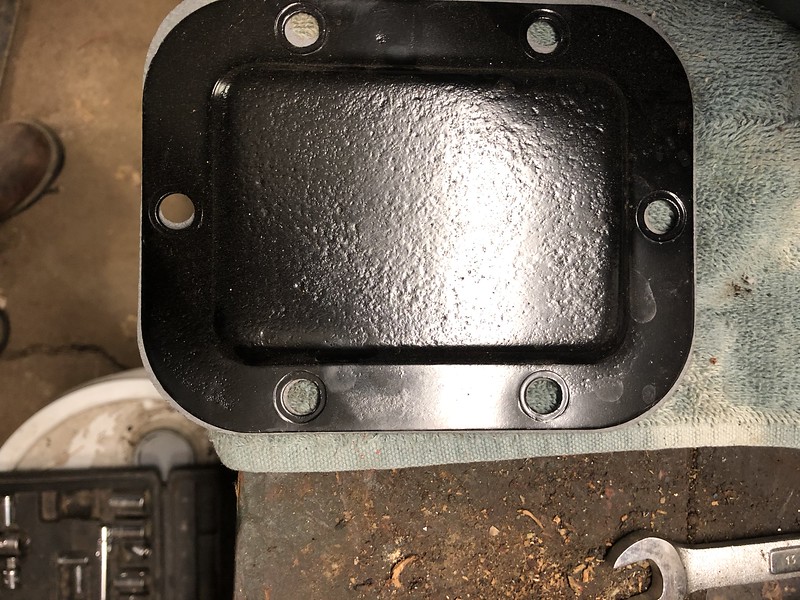
3. There are two shift rails, we are picking on the one nearest the input/rear output. For this mod there is no reason to pick on the other one. Using the punch tap out the small soft plug and let it fall into the case. Loosen the 3/4″ hex plug near the soft plug you just tapped out and move the shift rail so you can see a roll pin on the shift rail inside the t-case. Using the roll pin punch, tap out the roll pin (it is actually a spiral pin) and let it fall into the case.
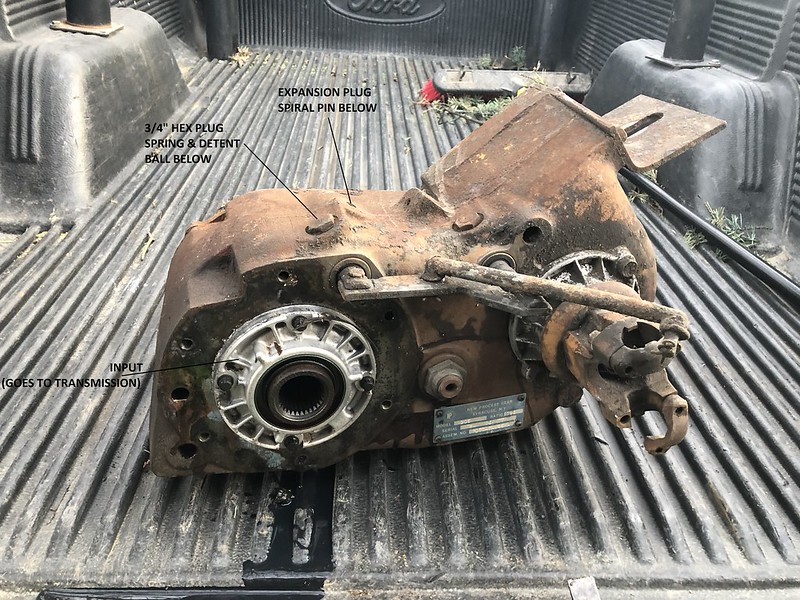
4. Remove the loosened hex headed plug. The spring should come out with the plug, use the magnet to remove the ball. Put in safe place (magnetic tray, Ziploc bag… do not leave loose because they will probably run away)
5. It will take a little finagling because the shift fork will want to bind but pull the shift rail out of the case. Be gentle, keep playing with it.
6. Remove soft plug and spiral pin from case thru the PTO hole. You may have to move the case around to get them to roll towards the hole. Put in safe place with other small parts from step 4.
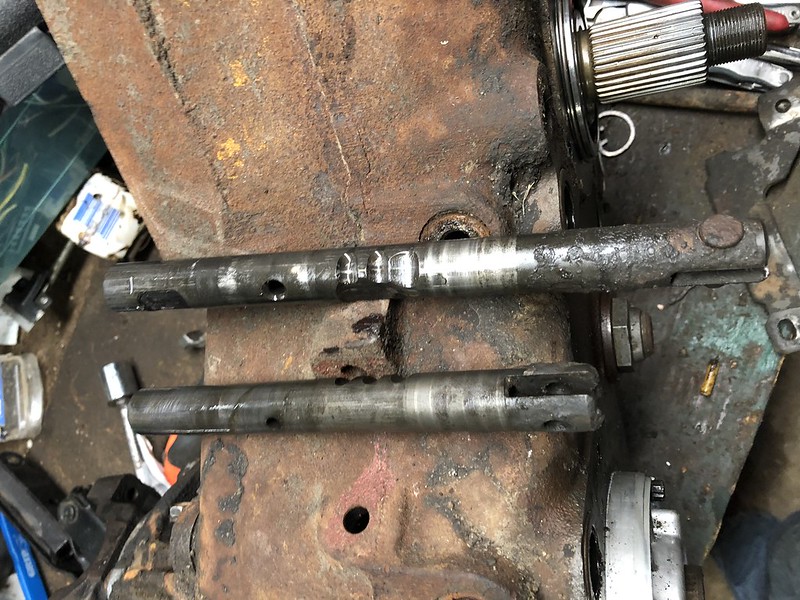
7. Clean the 40-50 years worth of dried grease off the rail. Using your measuring device of choice and a sharpie measure back 7/16″ on the center notch. I drew a line from the flat of the “valley” on each side and then one from the peak in the center to try to get the somewhat the same dimensions for the ramp. Fill the whole thing in with marker, try to simulate how you want the ramp to be. Being very careful grind out what you have marked. Remember going back and grinding more is easier than welding it back up and trying it again. Also note you have to have the grinder tipped quite a bit to not catch the other side of the valley (you can see I nicked it a little)
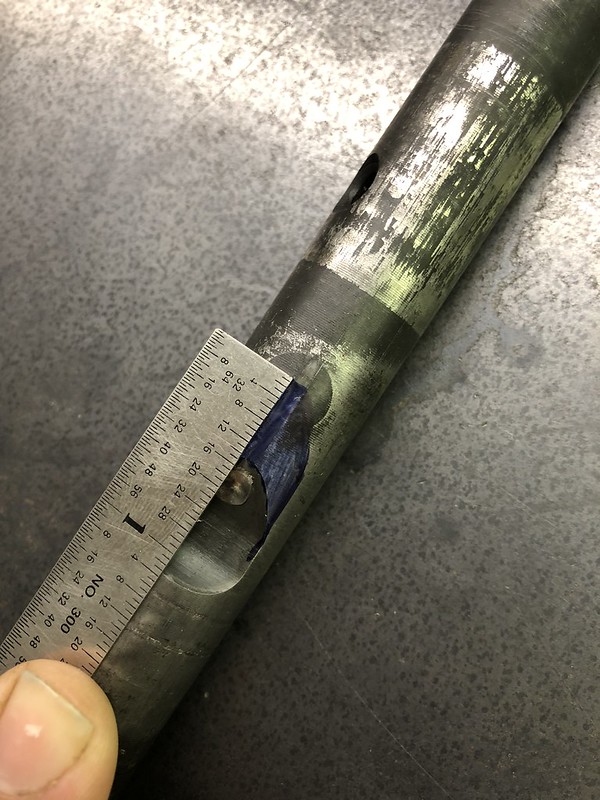
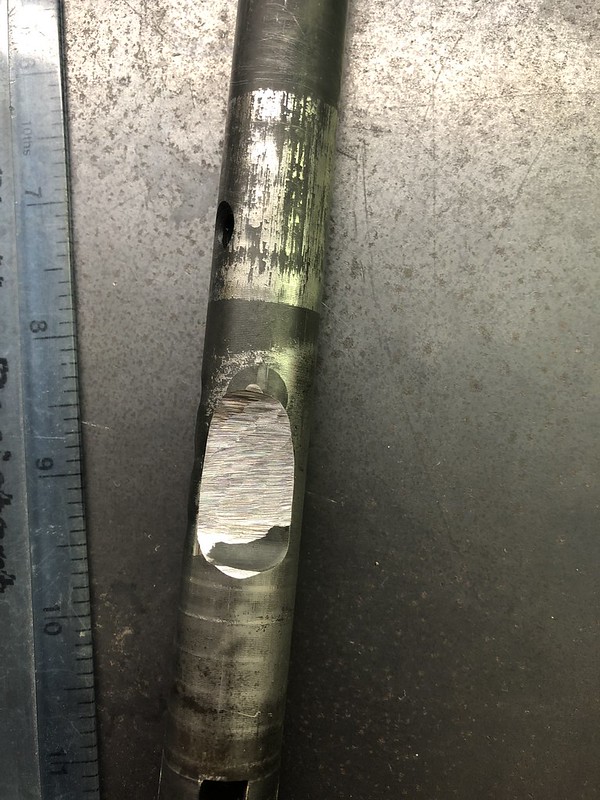
8. At the other end, mark inwards 3/8″ of an inch using the same technique. It is easier going and I managed to make mine look somewhat professional.
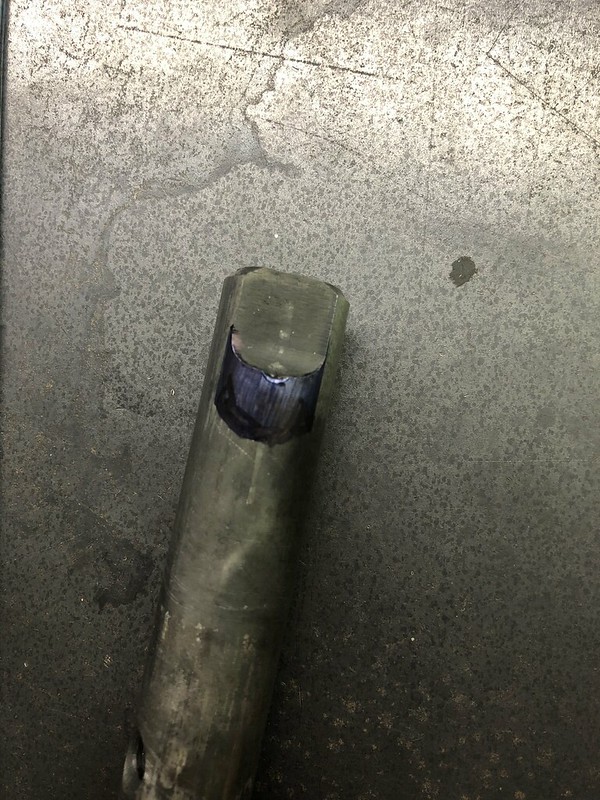
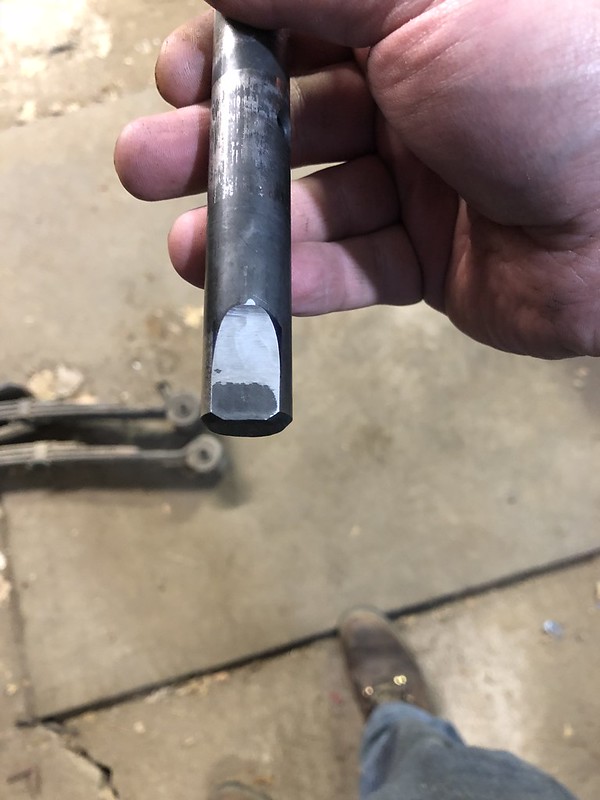
9. If you are going to change the seals do it now. Hook type seal puller works great, National 2287 for the seal. Both rails use the same seal but I am unsure of the “correct” procedure for the front shift rail seal without tearing it all apart.
10. Tip the t-case on the back with the input pointed up. Watching down the shift rail hole with the penlight and reaching into thru the PTO hole get the shift fork lined up so the shaft will go in it. If you get too far over and lose the fork set the t-case back upright and wiggle it around, you will hear the fork will fall back into place (it did for me anyway)

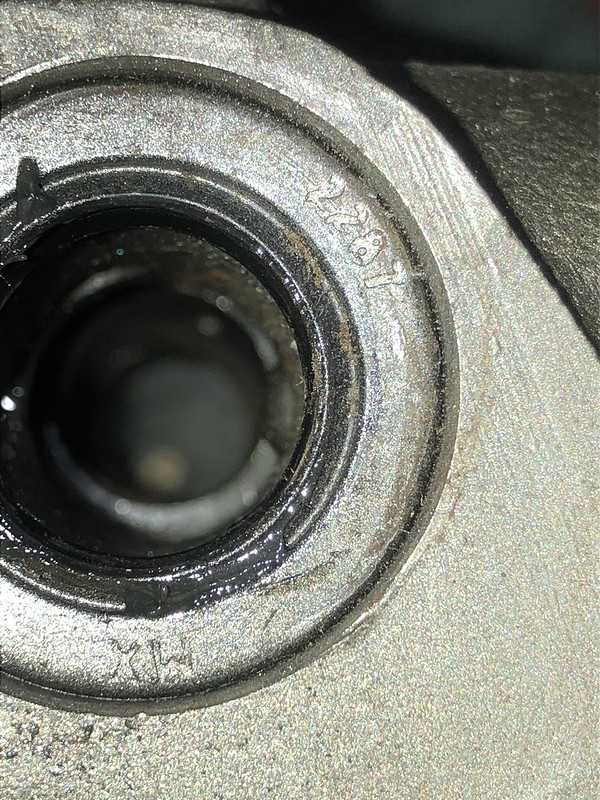
11. Slide the rail back in. Again it will want to bind with the shift fork but keep working it and it will go.
12. Position the shift rail and fork (use a punch to line up the fork) so you can see them in the hole the soft plug came out of to reinstall the spiral pin.
13. Reinstall the detent ball and lightly install the spring and plug to hold the rail in place (a notch will line up and put the spiral pin holes in line with the soft plug hole) Lightly installing the plug makes it easier test shift without the 2′ long lever.
14. Lightly tape the spiral pin to the roll pin punch with the electrical tape. You want it to be able to pull off and stay with the punch so don’t go too crazy with it. Go ahead and tap it in, you can get it a good ways in and switch to the bigger flat punch so you don’t go too far and start tapping it on thru.
15. Moment of truth, see how it shifts. You can go ahead and loosen the hex cap on the other side so it is easier to shift with the lever. MAKE SURE YOU CAN NOT PUT IN OPPOSITE RANGES OR YOU WILL GRENADE YOUR CASE!!
All the way in is low, middle is neutral and all the way out is high. If you can get the front in say high and the rear in low (or vice versa) you went too far with the grinder. You should be able to shift one side or the other into gear with the opposite side in the same range or neutral.
In mine the front has to be in neutral before I can shift the rear. Once the rear is in gear the front will easily follow suit.
4wd Lo:
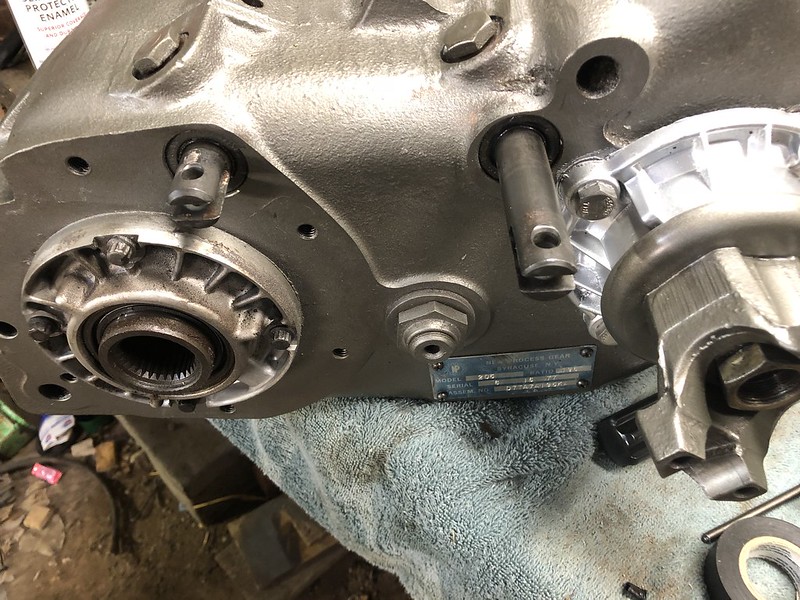
RWD Hi: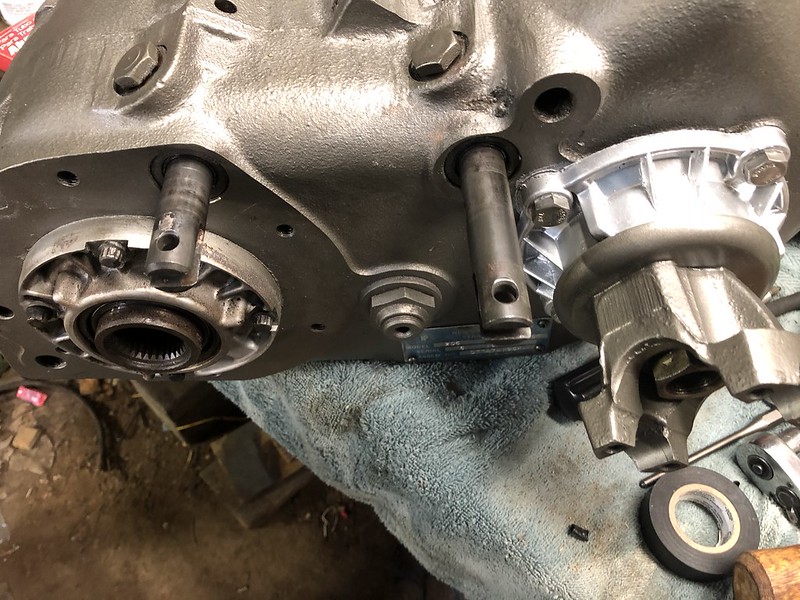
16. Once that is sorted out tap the small soft plug back in with the punch. Tighten both 3/4″ hex caps. Reinstall, fill with oil and test operation.
You will need to either fab your own levers (you will need two levers now, hence “twin stick”) or buy a lever kit.
DIY Twin Stick Levers:
As kind of a follow on project that goes with the twin stick modification… DIY Twin Stick levers.
Difficulty: 5 out of 10
Disclaimer: The Ranger Station.com, The Ranger Station.com Staff, nor the original poster are responsible for you doing this modification to your vehicle. By doing this modification and following this how-to you, the installer, take full responsibility if anything is damaged or messed up. If you have questions, feel free to PM the original poster or ask in the appropriate section of The Ranger Station.com forums.
Brief Explanation:
You have done the work to your transfer case, you are looking at the $300 lever kits online and wondering how hard it would be to make them yourself. Here is what I did, FWIW you will need to have access to a pretty well equipped shop to do this, it isn’t a do it on the deck of your apartment in a weekend kind of a thing.
Tools Needed:
– Angle Grinder
– Marker
– Welder
– Hacksaw/chopsaw to cut steel
– Possibly a ocy/acc torch to bend steel
– Drill (preferably a drill press)
– 9/32″ drill bit (for steel)
– 5/8″ drill bit
– Bench vice
– Vice Grips
– 3/8-28 UNF thread die with handle
Parts Needed:
– Two NP-205 Shift Levers w/plastic bushings
– 9/16″x3/4″x2.5″ Baum Hydraulic part # CB09-1218
– Bolt
– 4x balljoints (I used 4x Rotory 2210)
– 3/8 Threaded Rod (or whatever you need to fit the joints you use)
– 2x 1″ long 3/4″ DIA seamless tubing
– 1′ 1×3/16″ Steel Strap
– 2x 3/8×1-1/4″ cap screw with nuts (double nut if you can)
– 4x 3/8-25 UNF nuts
– Shift Knobs (kind of optional, anything will work. Stock knobs will work if you don’t care about the patterns) 1/4-28 thread for a stock NP-205 lever.
Truck Prep – Easiest with the carpet and floorplate out of the truck.
Step 1. Mount the levers on the transmission, see how they interact with things in the cab. The dash, the seat, other shifters, your leg etc. I used one lever from a married NP205 and another one from a divorced.
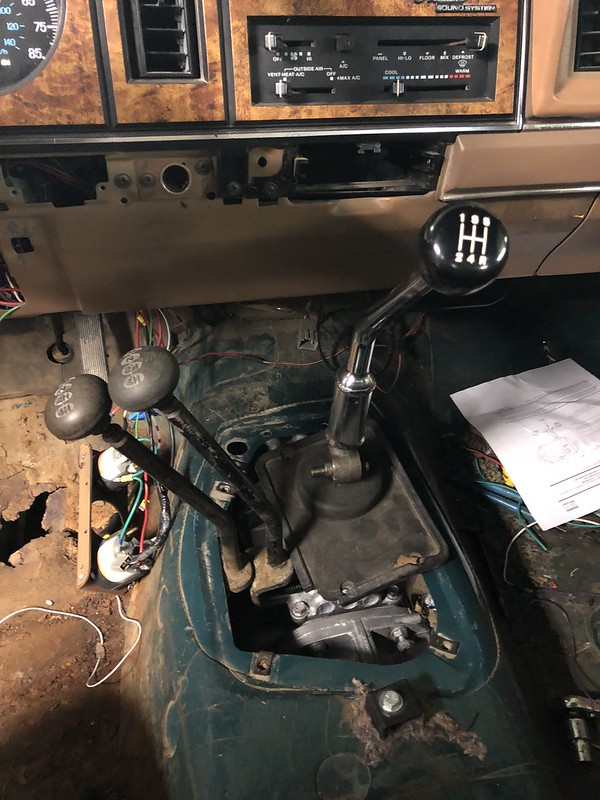
Purely unintentional but they had slightly different angles/height which helped keep them apart.
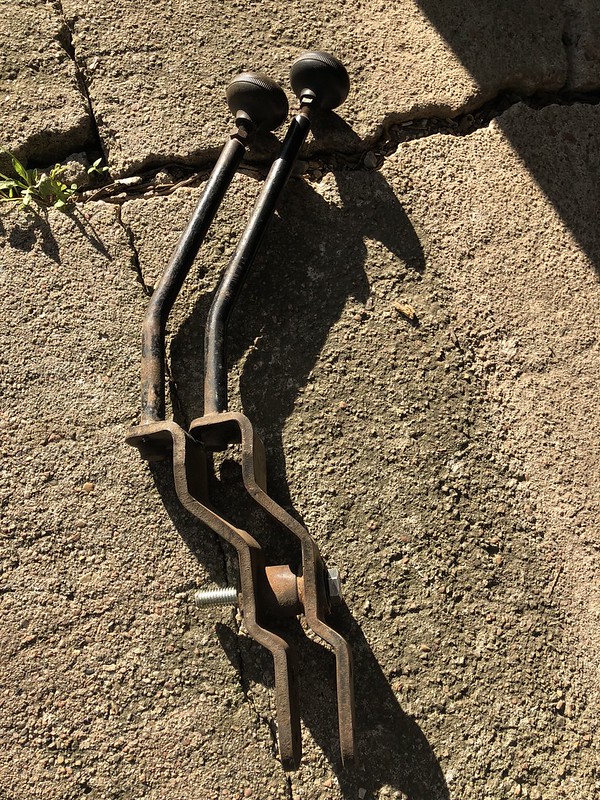
Step 2. Remove the levers from the trans, cut the bar off the bent part and grind it flat.
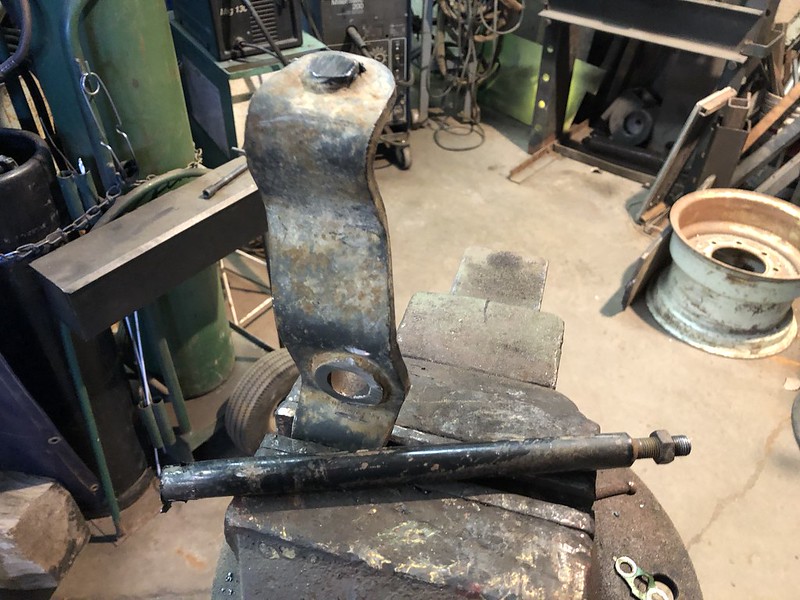
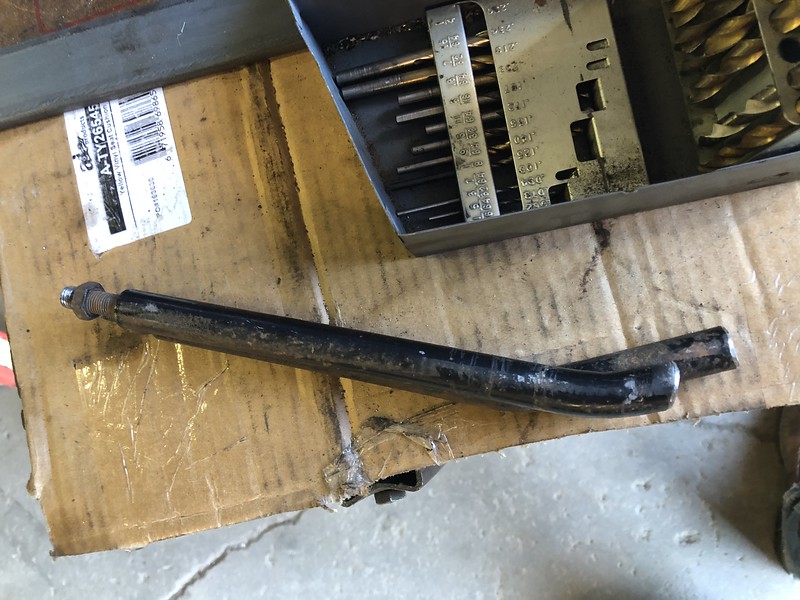
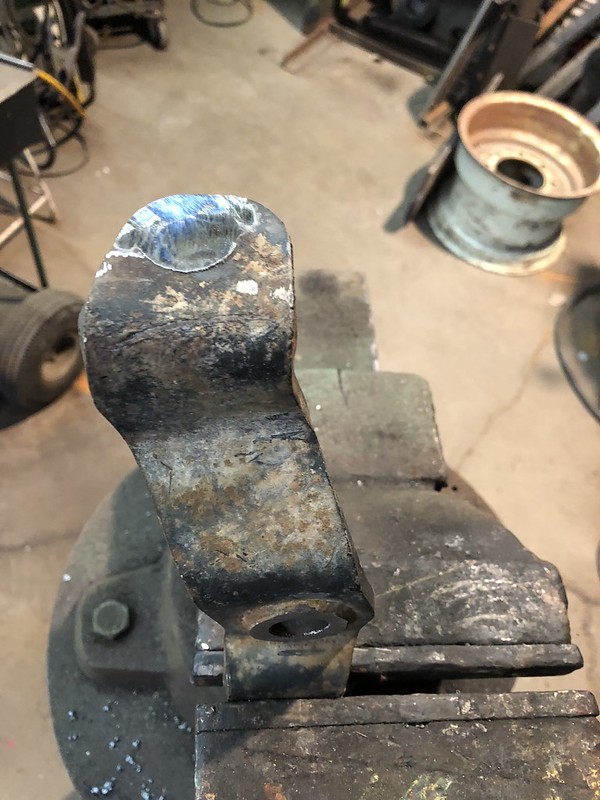
Whichever one you want for your outside lever needs to be have part of the base shortened up to fit right, cut/grind that down so you can still have one plastic bushing in it, the bronze bushing should protrude slightly with both levers on it.
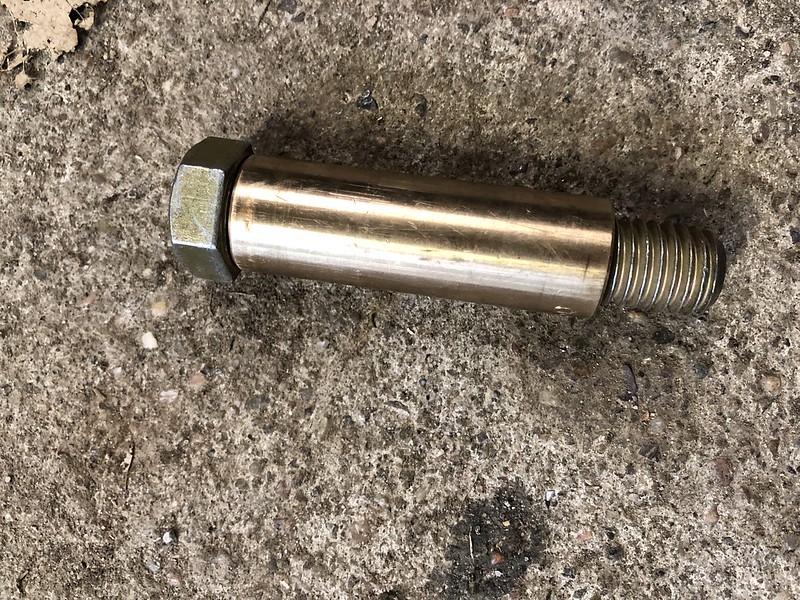
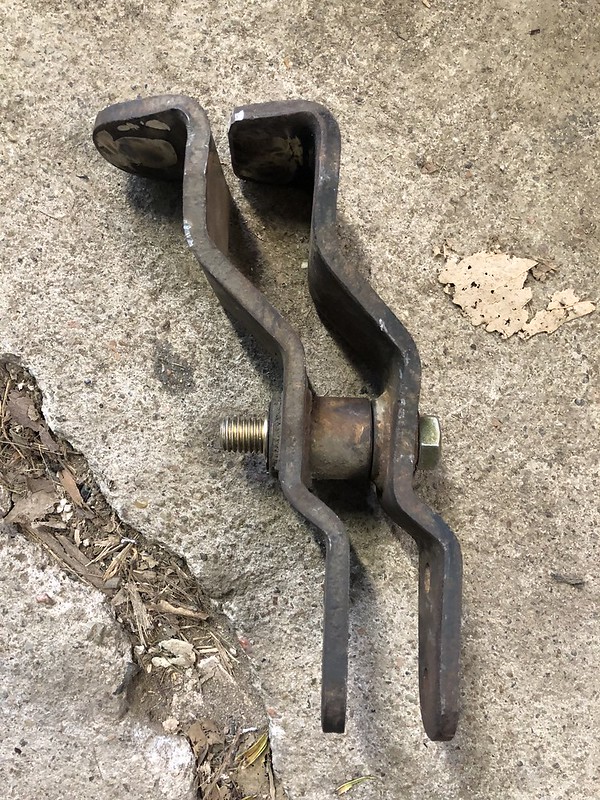
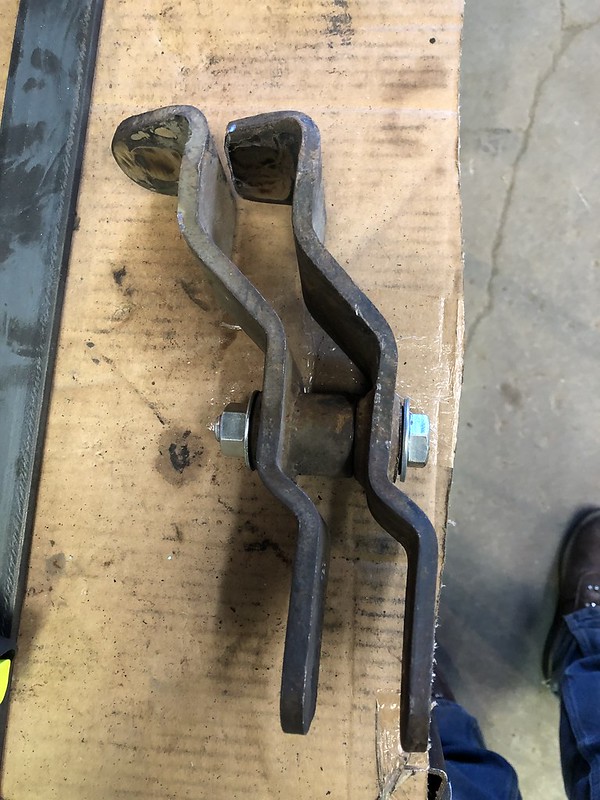
The inside lever will need some clearancing at the top so it doesn’t bind with the outside lever. Mr angle grinder to the rescue again.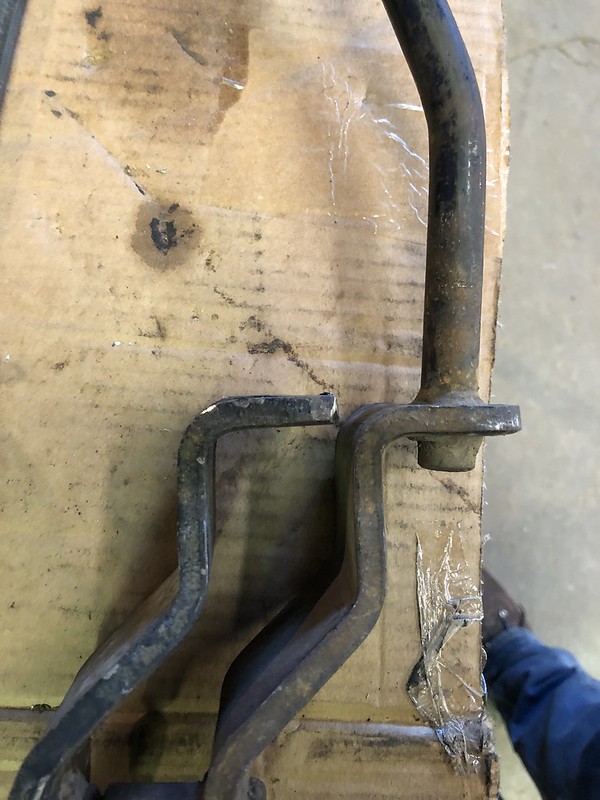
Once it is ground flat drill a 5/8 hole it in it so the levers will fit back in the pivots the same as they did originally.
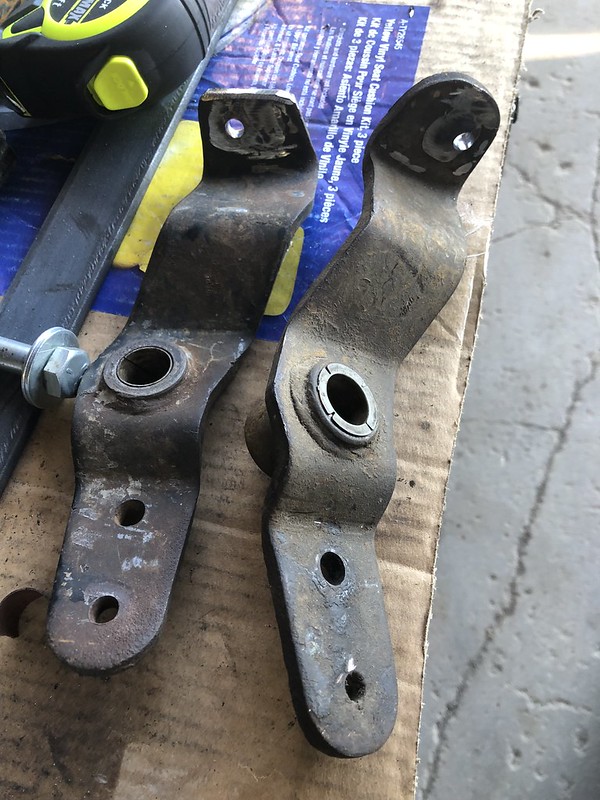
Trim levers to fit and angle them how you want. Reinstall bases back in truck and mark how you want the levers to sit with the marker. Both height and angle. Depending on how things play out you may need to heat the levers with a torch to get them where you want them, I did not need to. I do have mine angled more ahead than anywhere else though.
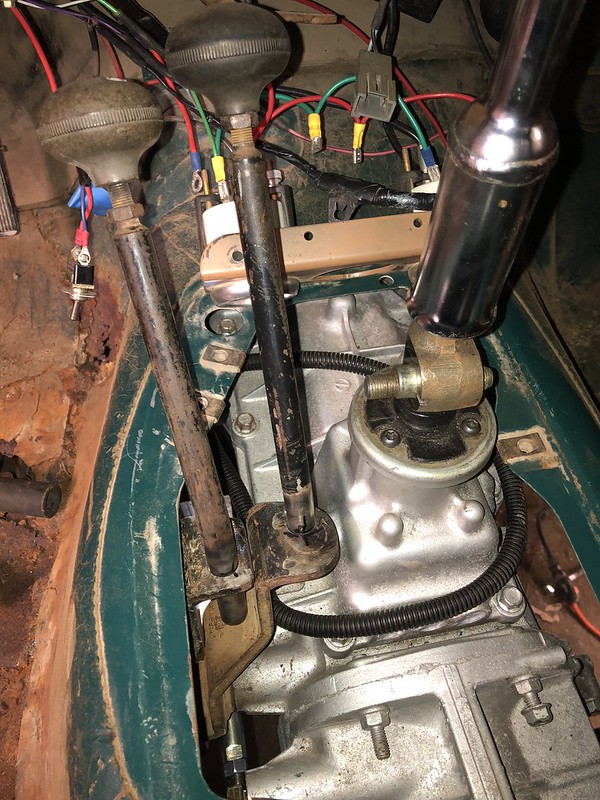
Weld the levers to the pivots. I left enough lever out the bottom (like 1/2″) to weld top and bottom like Ford did originally. Install in truck with knobs.
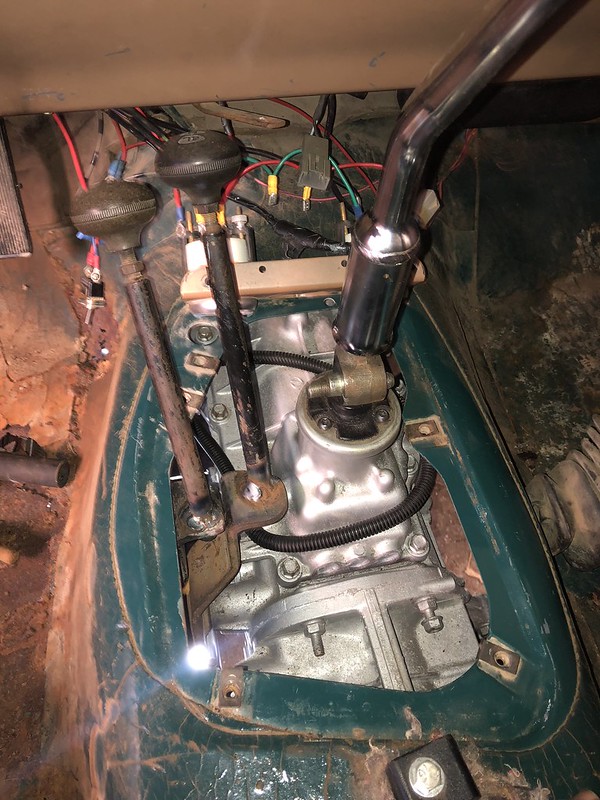
Drill holes in the seamless tube so they can be bolted onto the shift rails. Bend the straps so they line up with their respective levers using the torch and bench vice and vice grips. Drill a 3/8″ hole on the outer end.
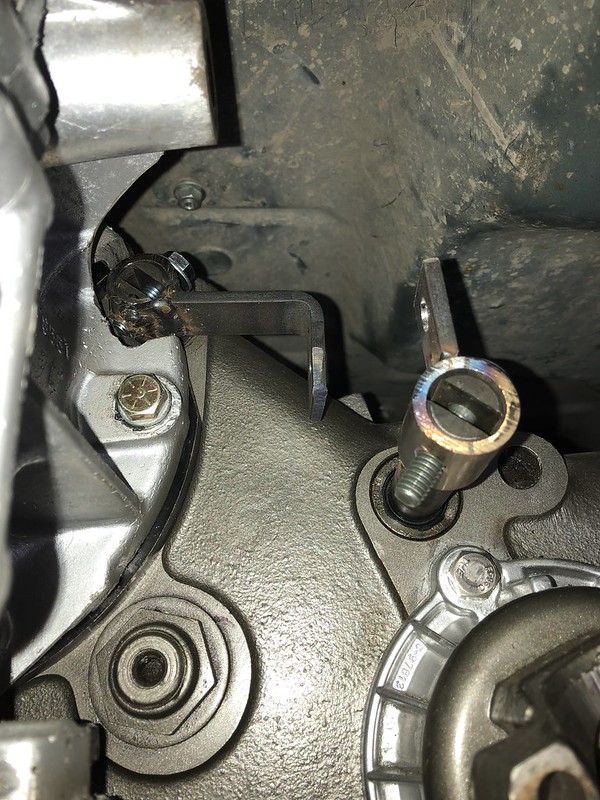
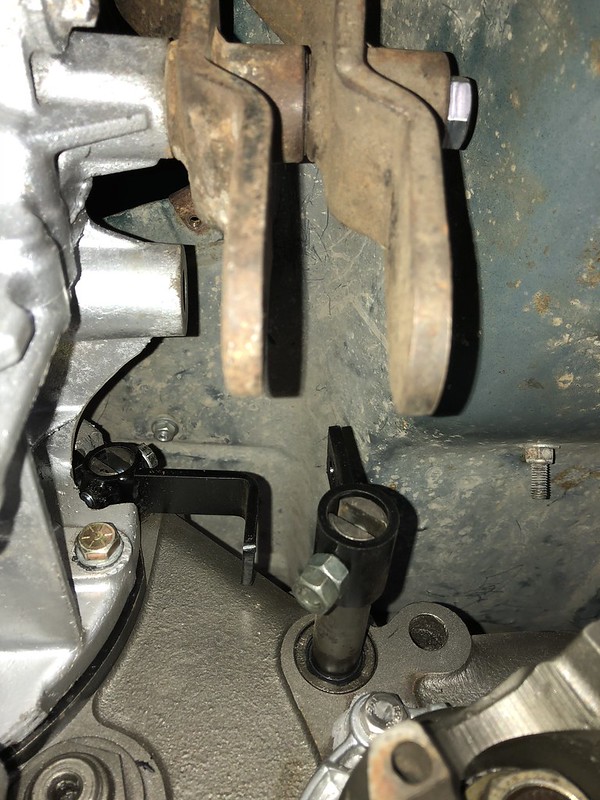
Install the joints on the levers and brackets. Put the t-case in neutral and kinda figure where you want the levers to be in neutral (the middle adjustment) Put the t-case in high and low and eyeball the levers movement and see if you want to adjust anything. Remember for a street driven truck the left lever will be in the center and the right lever will be to the back (2HI) most of the time.
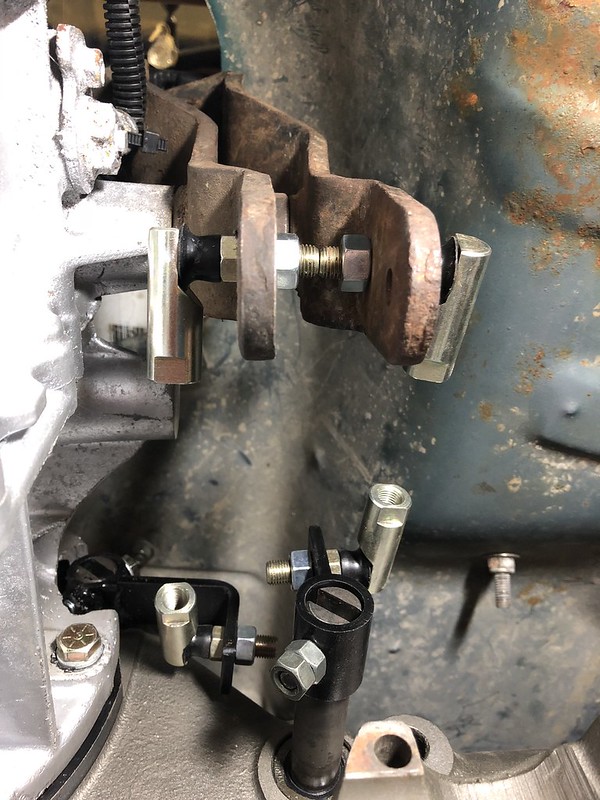
Measure for the threaded rod, remember it needs to go inside the joints and that is easier to make it shorter than it is to make it longer. Here is what I ended up for actual working lengths, your results will vary.
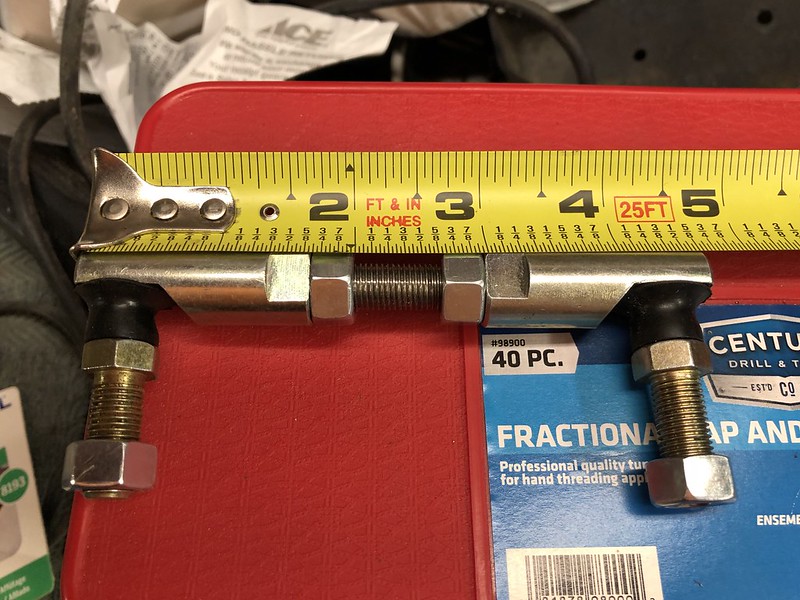
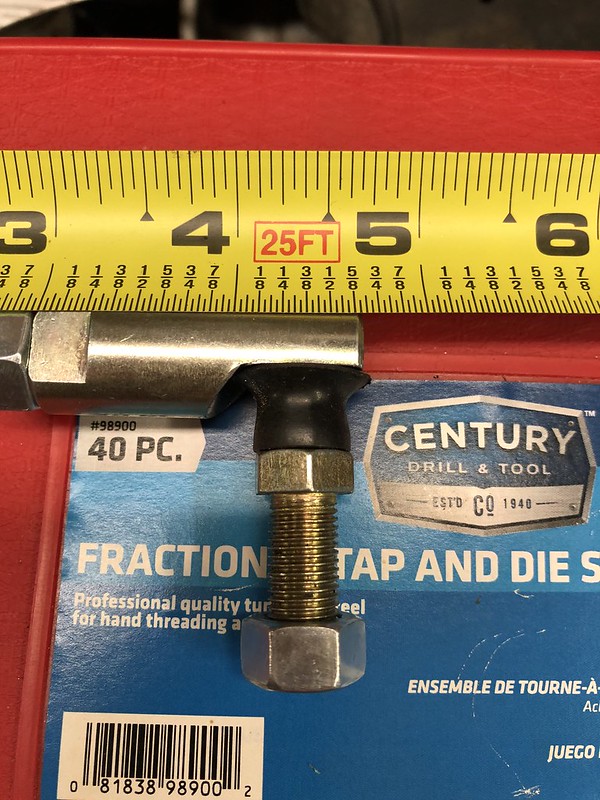
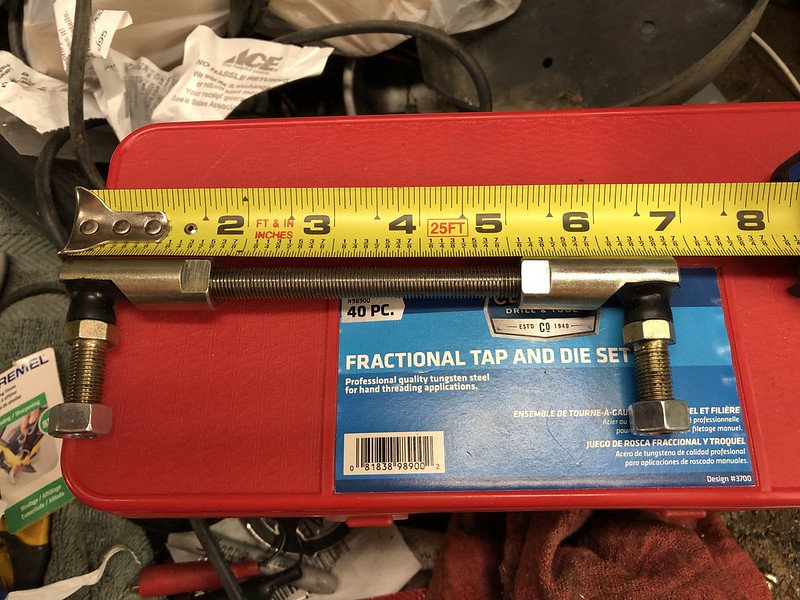
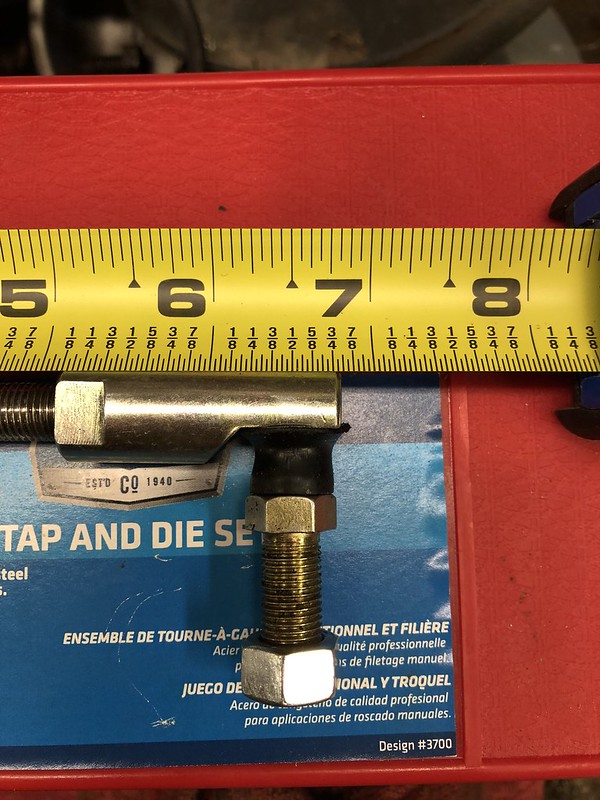
Clean up the threads with the die after you cut the threaded rod and install with nuts. Make sure you are happy with how everything works, you have some adjustment with the threaded rod if you need it. Then trim floor plate to fit the lever travel and install.
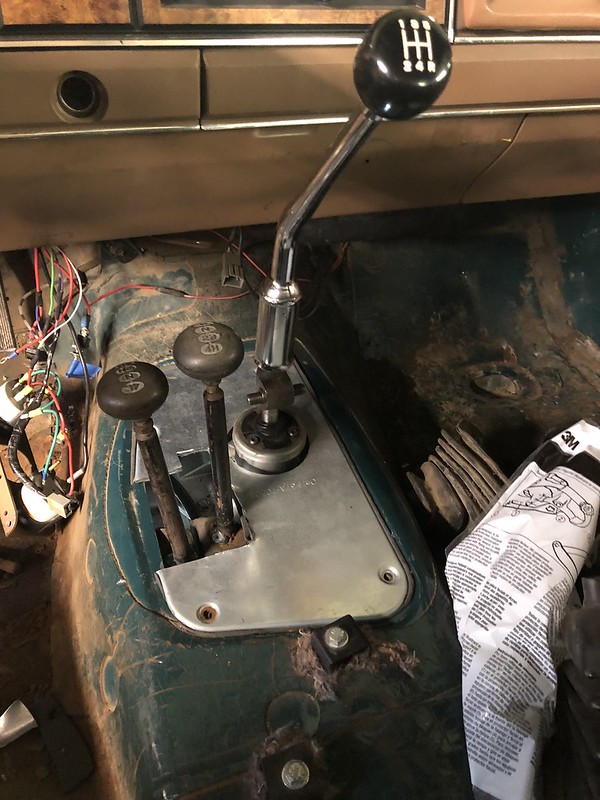
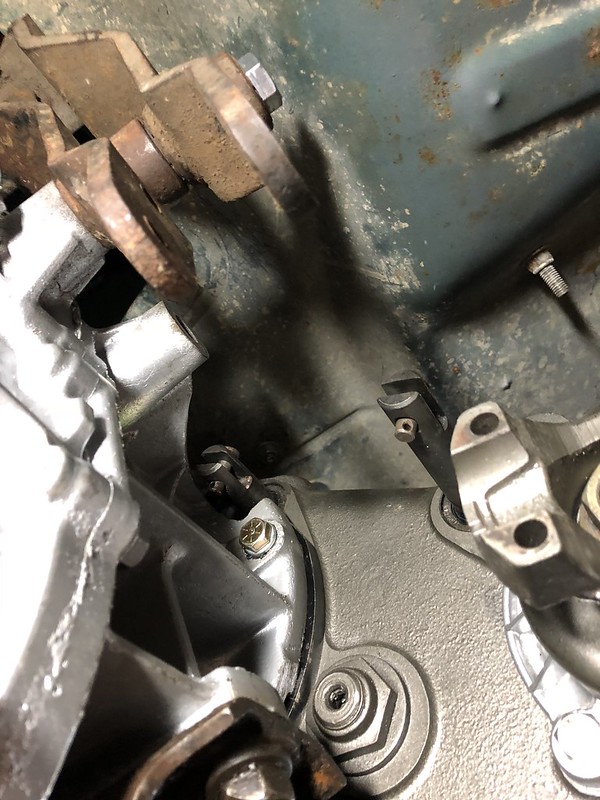
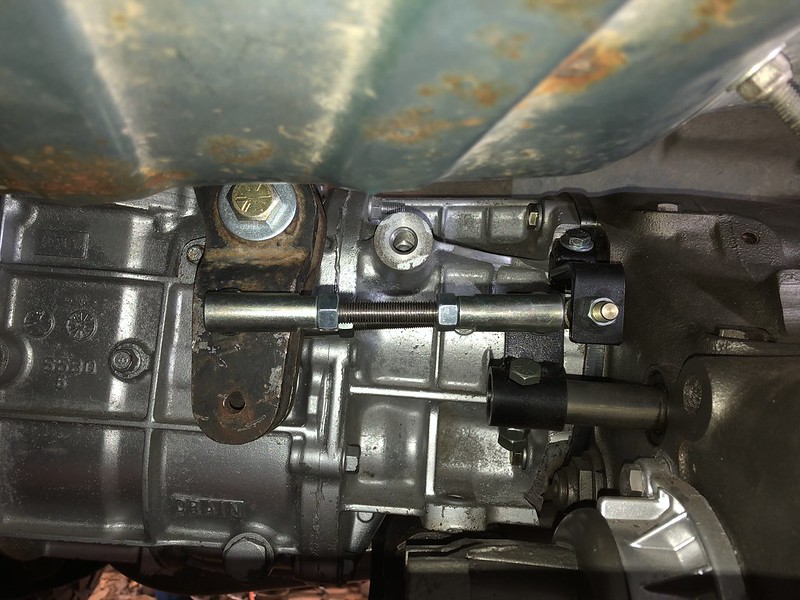
Optional, now if wanted go ahead and remove/clean/paint/reinstall the shift levers.
Reinstall your interior, add shift boots if wanted and have fun!
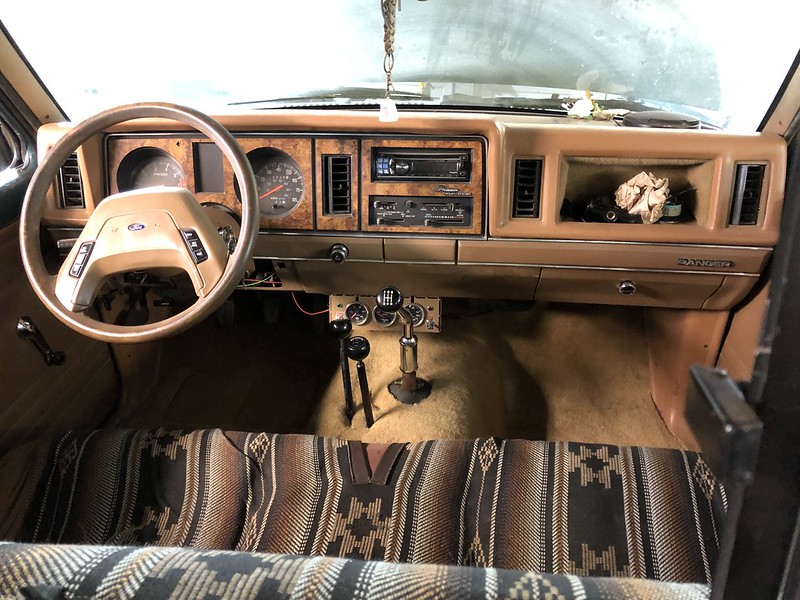
Feedback From Shran:
Great work… factory 205 shifters are a dime a dozen and that method is an excellent option. If your budget allows and/or you’re just a lazy dirtbag like me, JB Fab makes a whole kit. It requires same same shifter rail mod or replacement (I replaced mine, it was easier, and they ended up being really worn anyway.) I had to send my shifters back and have them shortened because they were way too long, they’re stainless or I would have just cut them off myself but it only cost me shipping – JB’s customer service is just awesome. Here’s a little pic dump from my twin stick conversion. I used front dig (FWD) several times last summer and it was sure a game changer on several obstacles.
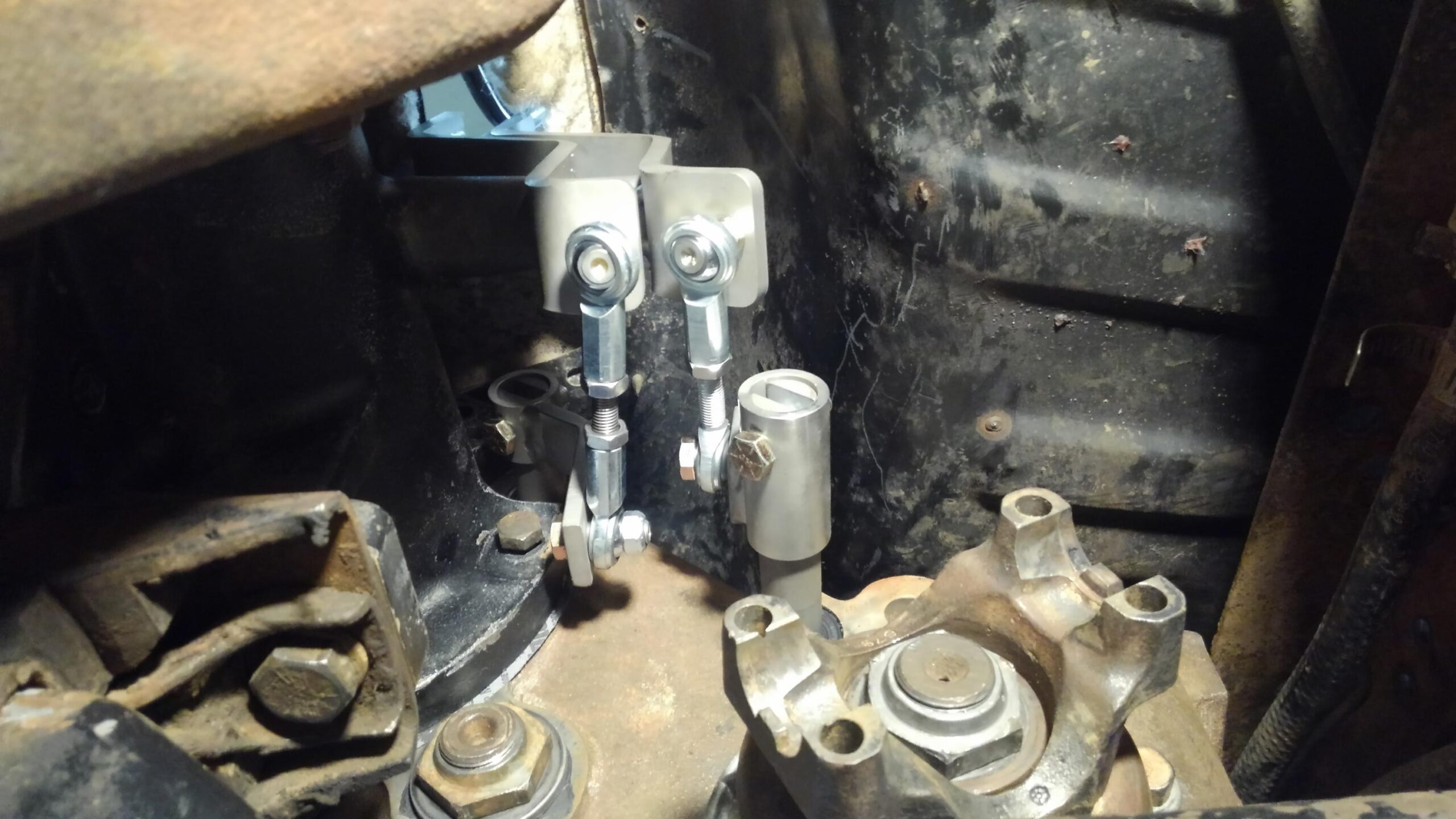
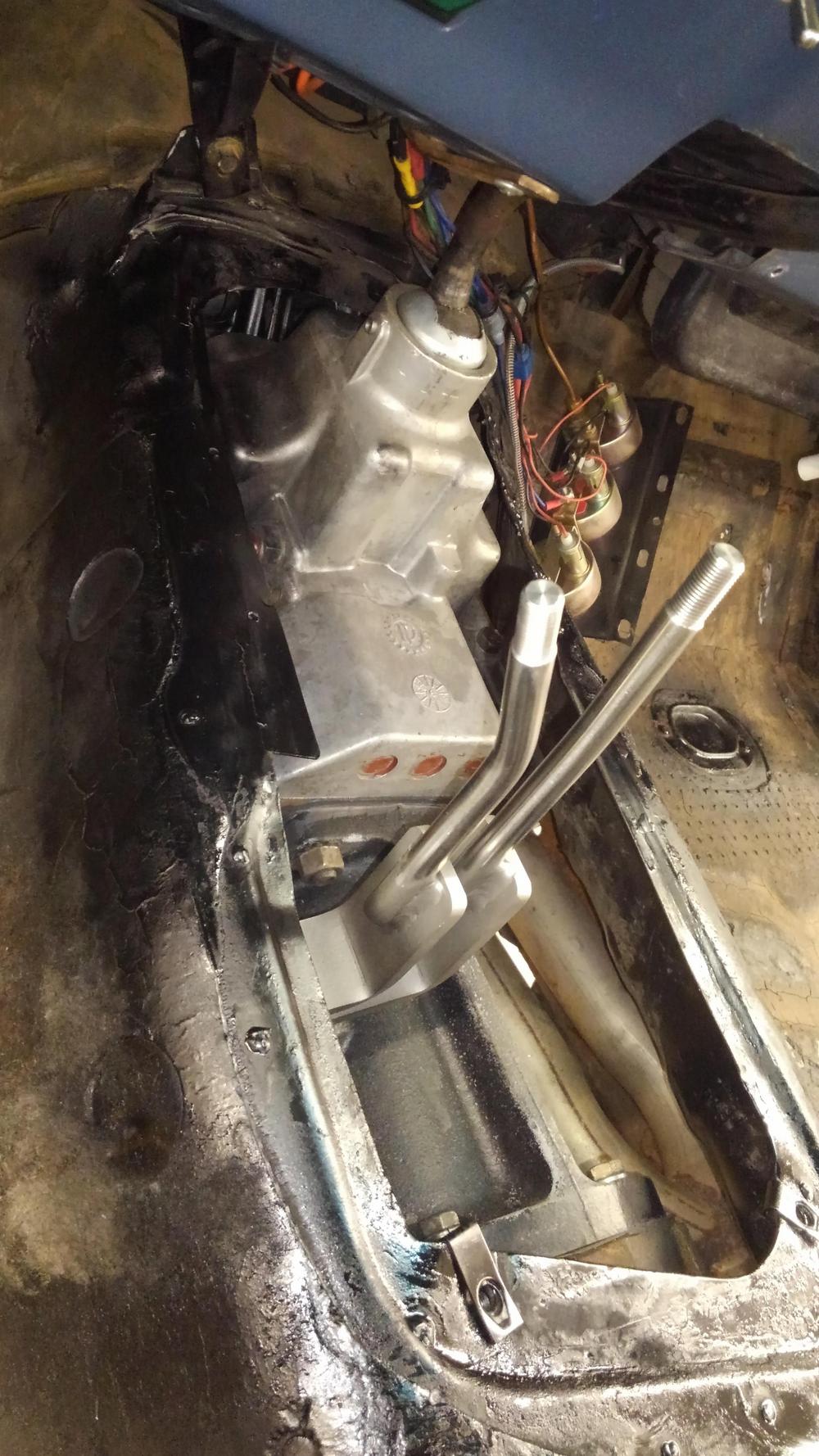
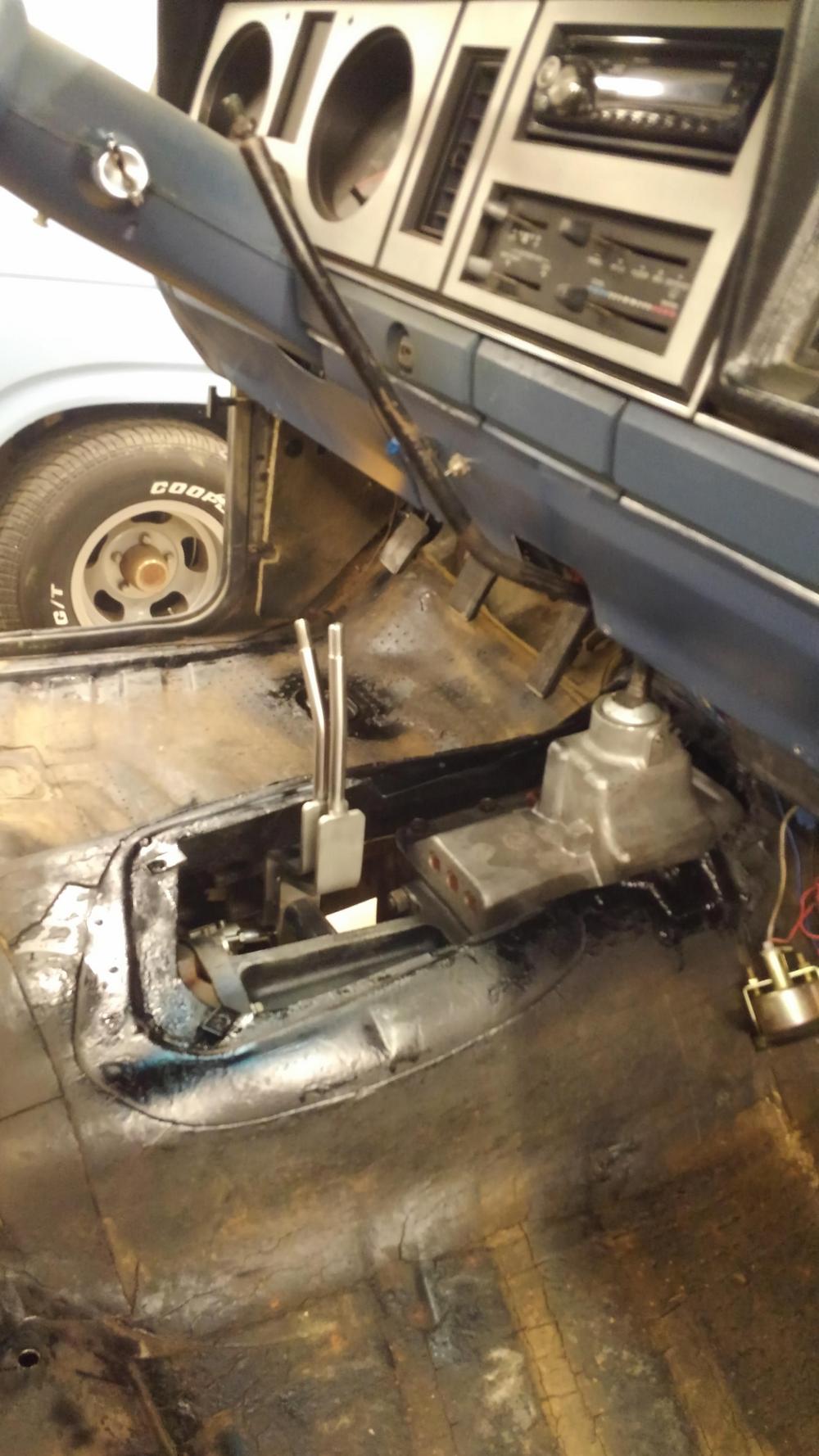
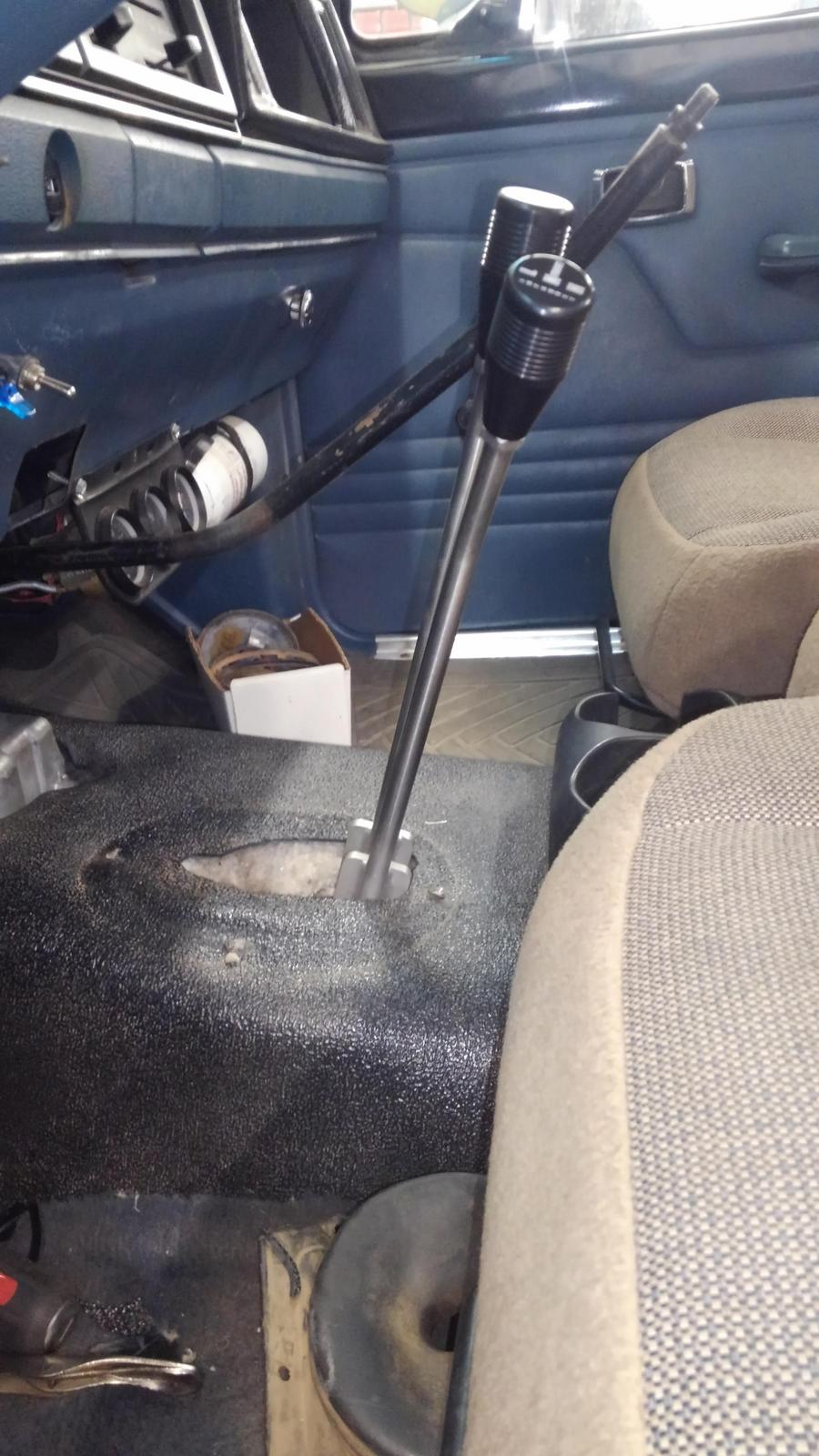
Before shortening (WAY too tall)
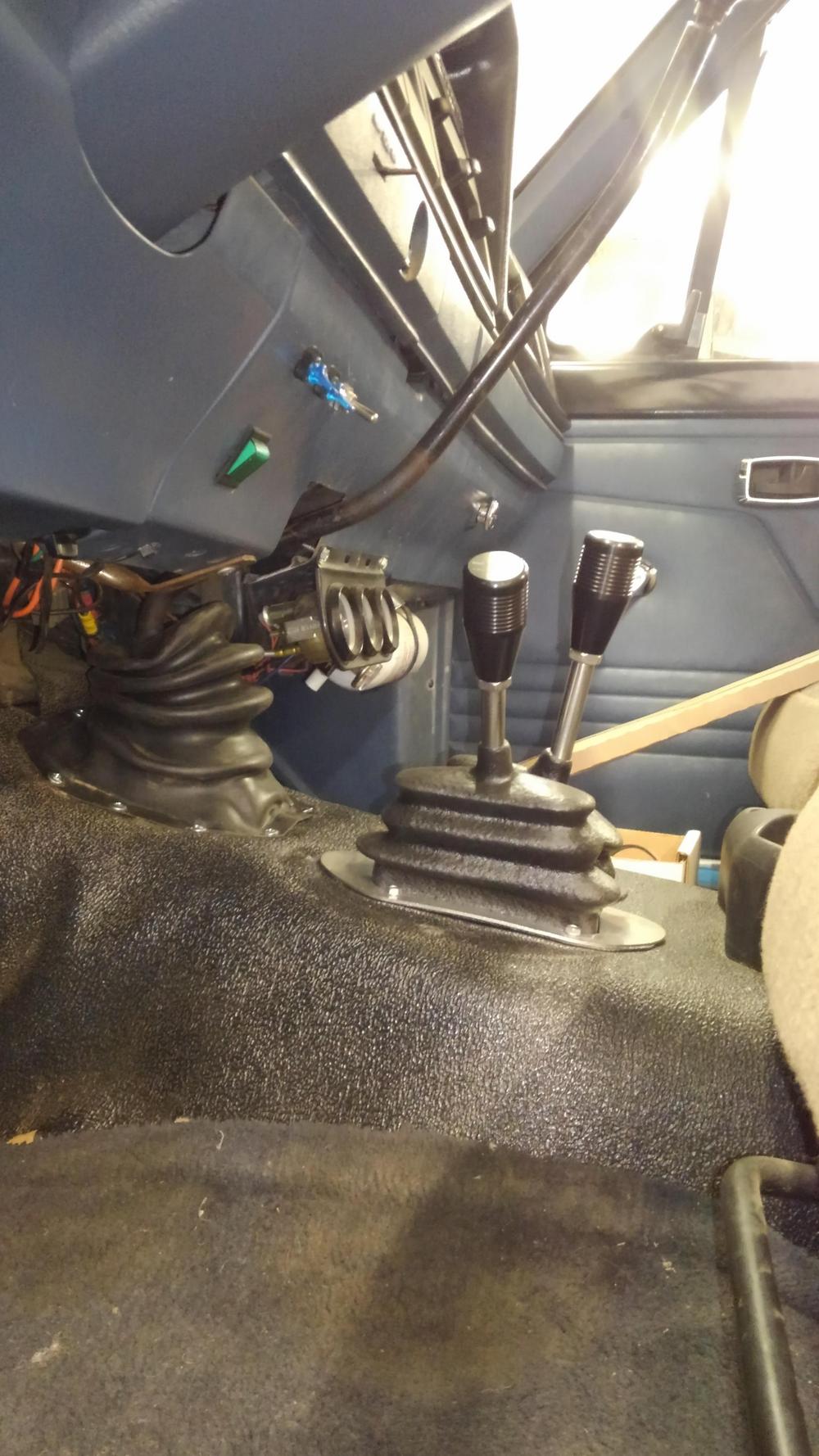
After

